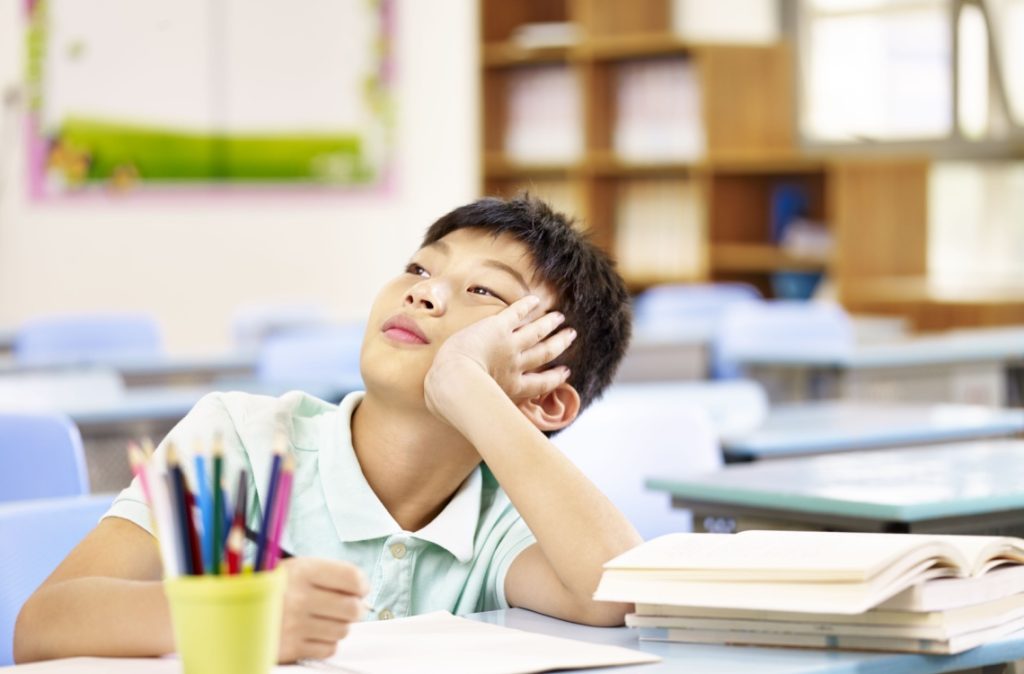It is no surprise that in this digital age, more and more children are suffering from short attention spans.
Even without being diagnosed with conditions like ADHD or autism, our little ones are getting easily distracted.
6 Tips to Help Your Child Maintain Focus
Try Fidget Toys
Fidget toys, also known as stress toys, can be helpful companions for children who are easily distracted, particularly if their distraction stems from anxiety.
There is anecdotal evidence suggesting that fidget toys can aid in emotional regulation and stress relief.
If your child tends to feel stressed before or during tasks like homework, a fidget toy might provide some support.
Popular options include fidget spinners, stress balls, slime, and other small, engaging objects they can use while working.
However, it’s important to note that not every child benefits from these toys. Finding the right one may require some trial and error.
For children with ADHD, fidget toys might actually increase distraction rather than reduce it. Keeping this in mind can help you make an informed decision about whether they’re suitable for your child.
Remove Electronics
In today’s world, electronic devices have become one of the biggest sources of distraction for children.
While television and computer games were once the primary culprits, smartphones and tablets now dominate.
It’s common to see children as young as 10 years old with their own smartphones or using their parents’ devices—this has quickly become the norm.
Although phones offer convenient entertainment, they can actually contribute to attention issues in children. Research has linked excessive screen time to ADHD-like symptoms in preschool-aged children.
If electronic devices are a major source of distraction for your child, consider gradually reducing their screen time.
For new parents, a helpful approach is to avoid fostering reliance on electronic devices from an early age.
Setting these boundaries now can save you a lot of challenges down the road.
To-Do Lists
Time-Outs
No, not like the punishment. But time-out as in taking breaks.
It’s important to include plenty of breaks between tasks to help your child stay focused and productive.
If your child has a two-hour homework session, ensure they take short breaks of 3 to 5 minutes every 15 to 20 minutes.
These breaks can help prevent boredom and burnout, allowing them to approach their work with renewed energy.
Short pauses during long tasks give the brain a chance to rest and come up with fresh ideas and solutions.
This is especially beneficial for mentally demanding subjects like mathematics.
In this case, taking breaks can actually improve efficiency and problem-solving speed compared to working continuously without pause.
Consider Supplements
While not a universal solution, certain supplements, often referred to as nootropics, have shown promise in improving attention. Examples include ginkgo biloba, fish oil, and ashwagandha.
It’s crucial to consult a physician before starting any supplement, especially if your child is already taking medication.
For parents hesitant to use prescription medications or those unable to afford them, supplements can offer a potential alternative.
Unlike attention-boosting drugs, supplements are less likely to cause side effects such as headaches, depression, insomnia, or mood swings, which are often associated with these medications.
Exploring alternative remedies like supplements may be a gentler first step in addressing attention issues.
The Power of Sound
Music serves countless purposes beyond mere entertainment. It has been used to reduce stress, alleviate depression, boost energy, and even ease pain.
When addressing attention challenges, however, not just any playlist will do.
You may be familiar with white noise—steady, nature-like sounds often used to promote sleep. But did you know there are also other types of ‘colour noises’, such as brown noise, pink noise, and black noise?
Each has unique properties that may support cognitive function in different ways.
Although scientific evidence is limited, anecdotal reports suggest that brown noise, in particular, may help quiet internal dialogue—a common symptom for those with ADHD.
It could be worth exploring how these sounds might benefit your child.
Removing Distractions
If your child is constantly distracted, it can prevent them from completing important tasks like homework, chores, or even staying out of trouble at school.
When distractions persist despite your efforts, it may help to sit down with your child and have an open conversation to understand the root cause.
Sometimes, the issue isn’t the environment but deeper concerns they may be reluctant to share.
While a distracted child isn’t always a major cause for alarm, it does require a parent’s attention and guidance.
By helping your child rediscover their focus and find joy in their activities, you can equip them with the tools to manage distractions independently in the future.
Disclaimer: The information provided in this article is for informational purposes only and should not be considered as medical advice from Mamahood. For any health-related concerns, it is advisable to consult with a qualified healthcare professional or medical practitioner.
For more insightful stories and parenting advice, stay tuned to Mamahood Singapore!
